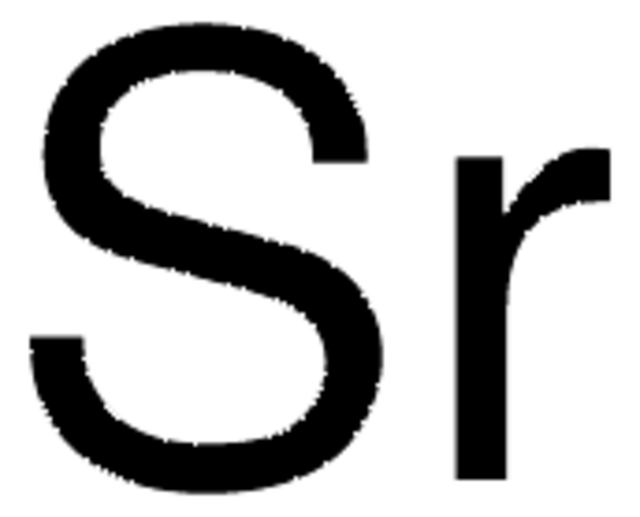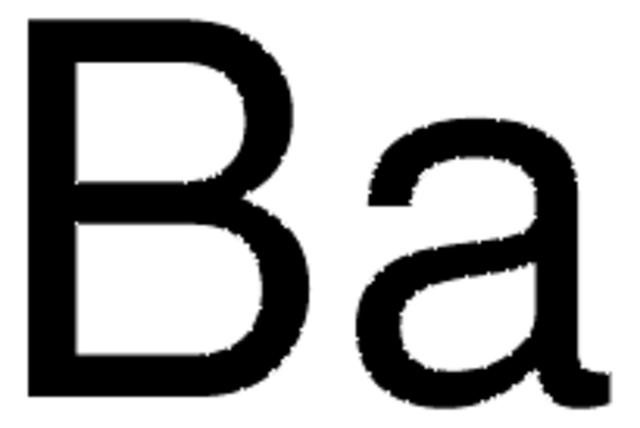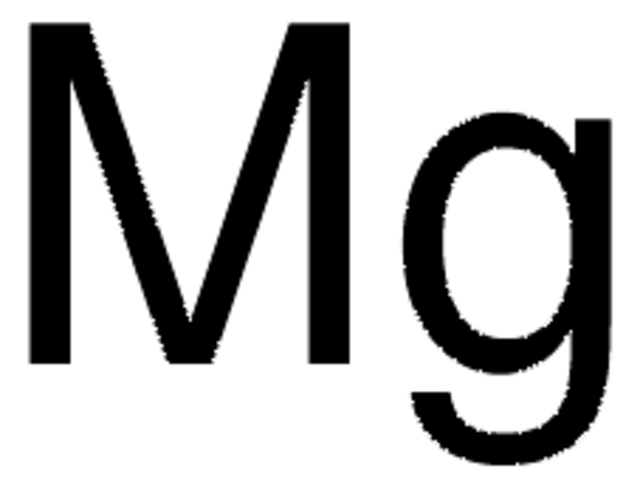403326
Strontium
granular, 99% trace metals basis
Synonym(s):
Strontium element
Sign Into View Organizational & Contract Pricing
All Photos(2)
About This Item
Empirical Formula (Hill Notation):
Sr
CAS Number:
Molecular Weight:
87.62
EC Number:
MDL number:
UNSPSC Code:
12141504
PubChem Substance ID:
NACRES:
NA.23
Recommended Products
description
under oil
Quality Level
Assay
99% trace metals basis
form
granular
reaction suitability
reagent type: reductant
resistivity
23 μΩ-cm, 20°C
bp
1384 °C (lit.)
mp
757 °C (lit.)
density
2.6 g/mL at 25 °C (lit.)
SMILES string
[Sr]
InChI
1S/Sr
InChI key
CIOAGBVUUVVLOB-UHFFFAOYSA-N
Looking for similar products? Visit Product Comparison Guide
Application
Used to make Strontium-potassium-niobate (Sr2KNb5O15, SKN). SKN is of great interest for pyroelectric sensors and various electro-optic devices.2
Signal Word
Danger
Hazard Statements
Precautionary Statements
Hazard Classifications
Skin Irrit. 2 - Water-react 1
Supplementary Hazards
Storage Class Code
4.3 - Hazardous materials which set free flammable gases upon contact with water
WGK
WGK 3
Flash Point(F)
Not applicable
Flash Point(C)
Not applicable
Personal Protective Equipment
dust mask type N95 (US), Eyeshields, Gloves
Regulatory Information
监管及禁止进口产品
Choose from one of the most recent versions:
Already Own This Product?
Find documentation for the products that you have recently purchased in the Document Library.
Zuzana Saidak et al.
Pharmacology & therapeutics, 136(2), 216-226 (2012-07-24)
Osteoporosis is an important age-related bone disease characterized by increased bone turnover with insufficient bone formation relative to bone resorption. According to the current understanding of this disorder, anti-resorptive and anabolic drugs have been developed for therapeutic intervention. Another therapeutic
Emily Y Tsui et al.
Nature chemistry, 5(4), 293-299 (2013-03-21)
Redox-inactive metals are found in biological and heterogeneous water oxidation catalysts, but, at present, their roles in catalysis are not well understood. Here, we report a series of high-oxidation-state tetranuclear-dioxido clusters comprising three manganese centres and a redox-inactive metal (M).
Faisal Hammad Mekky Koua et al.
Proceedings of the National Academy of Sciences of the United States of America, 110(10), 3889-3894 (2013-02-22)
Oxygen-evolving complex of photosystem II (PSII) is a tetra-manganese calcium penta-oxygenic cluster (Mn4CaO5) catalyzing light-induced water oxidation through several intermediate states (S-states) by a mechanism that is not fully understood. To elucidate the roles of Ca(2+) in this cluster and
R G Robinson et al.
JAMA, 274(5), 420-424 (1995-08-02)
To present the current state of systemic radiopharmaceutical therapy for the palliation of pain in individuals with metastatic cancer and to evaluate the palliative effect and degree of hemotoxicity of strontium chloride 89 (89Sr) in patients with painful osteoblastic metastases
Strontium and bone.
W E Cabrera et al.
Journal of bone and mineral research : the official journal of the American Society for Bone and Mineral Research, 14(5), 661-668 (1999-05-13)
Our team of scientists has experience in all areas of research including Life Science, Material Science, Chemical Synthesis, Chromatography, Analytical and many others.
Contact Technical Service





